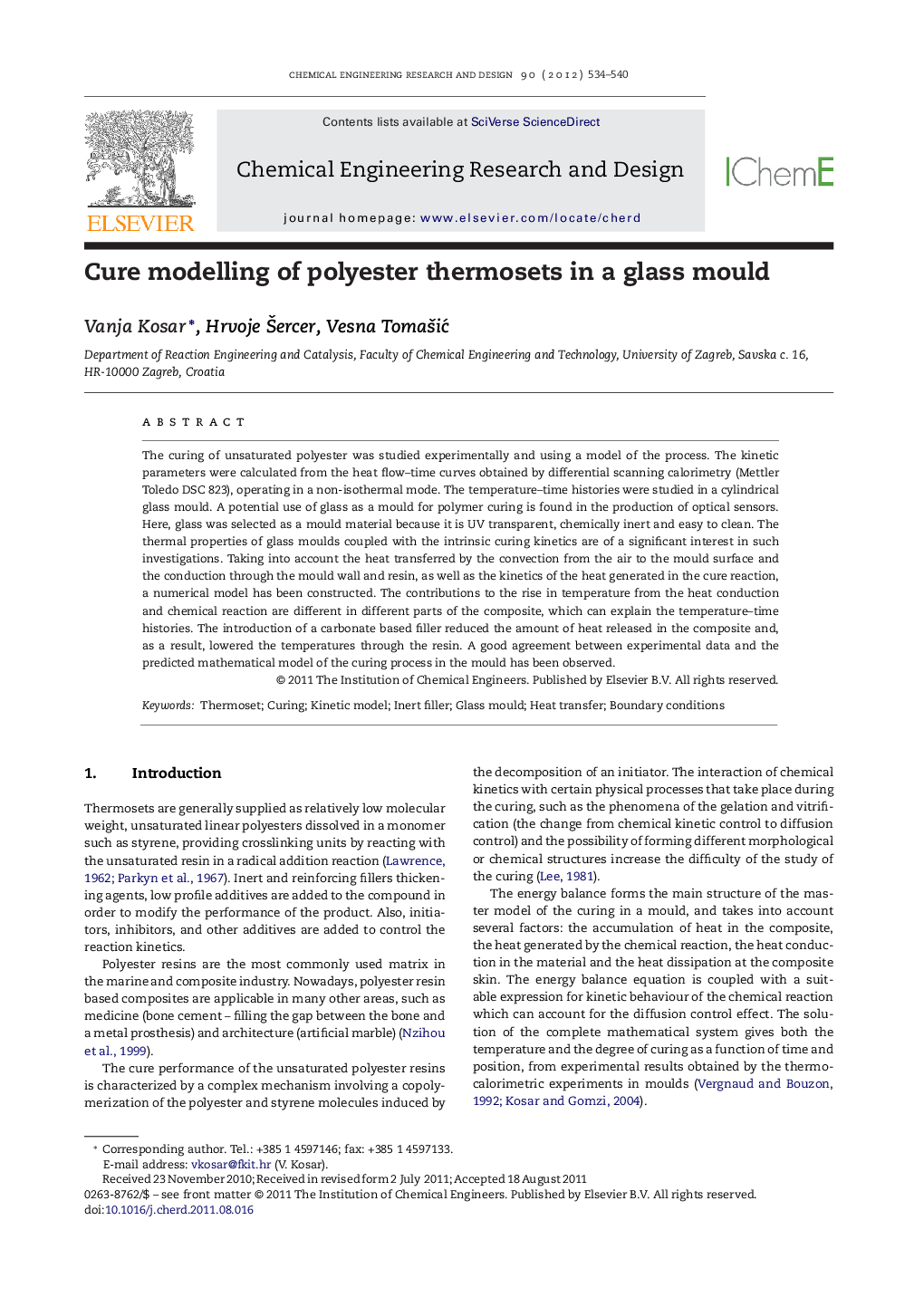| Article ID | Journal | Published Year | Pages | File Type |
|---|---|---|---|---|
| 621869 | Chemical Engineering Research and Design | 2012 | 7 Pages |
The curing of unsaturated polyester was studied experimentally and using a model of the process. The kinetic parameters were calculated from the heat flow–time curves obtained by differential scanning calorimetry (Mettler Toledo DSC 823), operating in a non-isothermal mode. The temperature–time histories were studied in a cylindrical glass mould. A potential use of glass as a mould for polymer curing is found in the production of optical sensors. Here, glass was selected as a mould material because it is UV transparent, chemically inert and easy to clean. The thermal properties of glass moulds coupled with the intrinsic curing kinetics are of a significant interest in such investigations. Taking into account the heat transferred by the convection from the air to the mould surface and the conduction through the mould wall and resin, as well as the kinetics of the heat generated in the cure reaction, a numerical model has been constructed. The contributions to the rise in temperature from the heat conduction and chemical reaction are different in different parts of the composite, which can explain the temperature–time histories. The introduction of a carbonate based filler reduced the amount of heat released in the composite and, as a result, lowered the temperatures through the resin. A good agreement between experimental data and the predicted mathematical model of the curing process in the mould has been observed.
► Our model adequately describes heat transfer and curing in the glass mould. ► Convective heat transfer can be evaluated from independent experiments. ► Mould material significantly decreases the speed of resin heating. ► Higher airflow rate around the mould decreases the heat transfer resistance.
